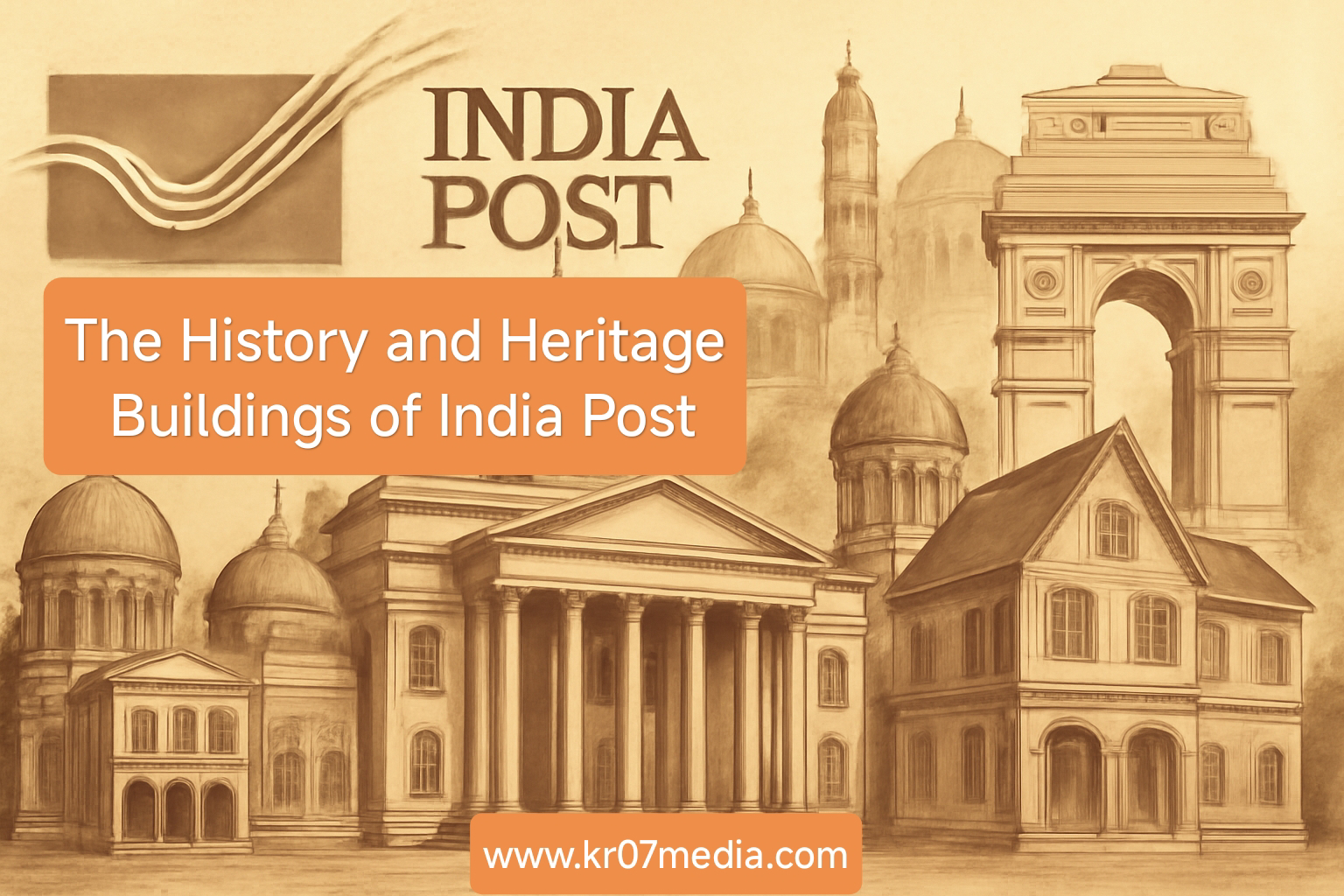India Post, known officially as the Department of Posts, is one of the oldest and largest postal networks in the world. With roots tracing back centuries, its institutions and buildings are not merely functional spaces, but serve as storied witnesses to India's socio-cultural and historical evolution.
The Evolution of India Post
Ancient and Medieval Beginnings
Ancient Era: The concept of organized communication in India can be traced as far back as Chandragupta Maurya's reign (circa 300 BCE), where methods like pigeon posts were believed to facilitate communication across provinces.
Medieval Era: Travelers like Ibn Battuta described efficient horse and foot postal systems under Delhi Sultanate rulers. Sher Shah Suri (16th century) is renowned for his system using horses and runners along the Grand Trunk Road, with rest houses (sarais) equipped for mail relay.
Colonial Foundations
East India Company and Company Mail: In 1727, the Company's first post office was opened. The postal system was largely meant to serve British administrative needs, expanding gradually under colonial rule.
Expansion and Legislation: The 1837 establishment of the Indian Post Office marked the beginning of a more formal postal infrastructure. In 1854, under Lord Dalhousie, the system was unified, standardized, and expanded through the India Post Office Act. This act introduced uniform postage rates, laid down postal rules, and instituted the role of Director General.
Pioneer of Air Mail: India was the site of the world’s first official airmail flight in 1911 between Allahabad and Naini.
Post-Independence Growth
At independence (1947), India had about 23,344 post offices, primarily in urban centers. By 2016, this number ballooned to over 150,000, with most in rural regions, reflecting India Post's key role in national integration, financial inclusion, and public services.
Heritage Buildings of India Post
India Post is the custodian of an extraordinary range of heritage buildings, many of which are categorized as historical monuments for their architectural grandeur and historical significance.
These buildings, along with many others, not only handle the day-to-day mail but also serve as architectural testaments to India’s layered postal legacy. Several have been commemorated through postage stamps and are protected as heritage structures.
Conservation and Legacy
India Post has officially identified more than 40 heritage buildings across the country, ranging from grand General Post Offices in metropolitan cities to quaint colonial post offices in hill towns and former princely states. These buildings embody unique blends of colonial, Victorian, Indo-Saracenic, and local architectural motifs. Efforts are ongoing to conserve these edifices while ensuring they continue to function as vibrant centers of public service.
Conclusion
India Post's heritage is not only encapsulated in its vast communication network but vividly so in its historical buildings scattered across India. Each GPO and heritage post office tells a story—a fusion of administrative evolution, architectural splendor, and the passage of time. These buildings continue to bridge India's ancient past and modern future, standing as enduring symbols of public service and national integration.






